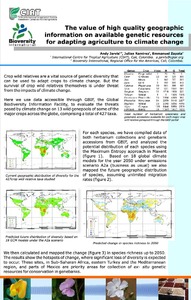The technical mitigation potential of demand-side measures in the agri-food sector: a preliminary assessment of available measures
A number of studies have suggested that addressing greenhouse gas (GHG) emissions from agricultural
production, or ‘supply-side emissions’, will be insufficient to reduce agri-food sector GHG emissions to limit
the increase of global temperatures to well below 2o
C. Recent studies have also suggested that ‘demandside
measures’ related to food consumption, food value chains, and food loss and waste, will be necessary
to reduce emissions and may have a larger technical mitigation potential than supply-side measures.




